Neuro-oncology experts reveal how to use AI to improve brain cancer diagnosis, monitoring and treatment
Powered by WPeMatico
Powered by WPeMatico

A Pinterest post claims that fenugreek seeds make skin clear. The claim is Half True.
There is a post on Pinterest titled, ” Fenugreek Seeds Benefits and Uses”, where the user avadhootha sharanya, claims that fenugreek seeds makes skin clear and mentions that vitamin C in fenugreek seeds brightens the complexion and gives it a beautiful glow. The user highlights various uses of fenugreek seeds, claiming fenugreek seeds can make skin clear, aid in digestion, better sleep, weight loss, relieve menstrual cramps, stop hair fall.
Among the other claims the user also claims that fenugreek seeds can make skin clear.
The post can be accessed here.
The claim is Half true. Studies have highlighted the effects of fenugreek seed on skin clarity, but it is not an established remedy for all related issues and lacks medical consensus as a recommended treatment.
Fenugreek (Trigonella foenum-graecum L.), a member of the Fabaceae family, has been a significant spice since ancient times. Globally, between 70 to 97 species of fenugreek are cultivated. Beyond its use in cooking, the literature highlights its role in addressing various lifestyle-related disorders, including cardiovascular conditions, high cholesterol, high blood sugar, liver conditions, and testosterone-deficiency syndrome. Fenugreek is also valued for its high dietary fibre content and essential nutrients that support healthy growth and development. Its seeds are rich in fibre, phospholipids, glycolipids, oleic acid, linolenic acid, linoleic acid, choline, vitamins A, B1, B2, C, nicotinic acid, niacin, and numerous other beneficial elements.
Clear skin also known as flawless skin is something many of us want, and the desire for better skin quality is only growing. Good skin significantly impacts emotional health, quality of life, self-perception, and interactions with others. The condition of one’s skin is linked to physical appearance, self-confidence, and social interactions, emphasizing the value of maintaining high skin quality. Skin quality can be understood through three main types of features: visual, topographical, and mechanical. Visual features include things like redness, dullness, sallowness, radiance, shine, and uneven pigmentation. These are what we see when light hits the skin and remain noticeable even if the skin’s surface is smoothed. Topographical features refer to the skin’s texture, which you can feel or see in detailed images, including roughness, fine and coarse lines, dryness, and pores. Mechanical features describe how the skin moves and reacts to touch, such as its elasticity, firmness, and thickness. Some aspects, like crepiness, laxity, and hydration, can fall into more than one of these categories. Scars, although they affect all three areas, are seen as secondary issues, not primary features.

Dr Shireen Furtado (MBBS, MD, FRGUHS), Senior Consultant (Medical & Cosmetic Dermatology) at Aster CMI Hospital, Bangalore has shared her views on the impact of dietary changes on skin clarity. She said, “Dietary choices can influence skin clarity, though results vary by person. For instance, high-glycemic foods like sugary snacks and refined carbs can spike insulin, potentially increasing oil production and acne. Additionally, foods rich in antioxidants, like berries and leafy greens, help fight inflammation, which supports overall skin health. Omega-3 fatty acids from fish or flaxseed may also reduce inflammation-related skin issues, promoting a clearer complexion.”
Studies have given that fenugreek seeds possess high nutritious value rich in fibre, phospholipids, glycolipids, oleic acid, linolenic acid, vitamins A, B1, B2, and C, nicotinic acid, niacin which is good for health. There are studies that have mentioned the role of fenugreek seed but in combination with other ingredients may show benefits towards retaining skin moisture and making skin smooth, supple and soft, but there is no scientific evidence or medical consensus that supports the claim that fenugreek seed alone can make skin clear.
The study published in the journal Pharmaceuticals concluded that Liponiosome encapsulating fenugreek extract (LNF) [made from fenugreek seeds] can potentially be used as an ingredient for better skin ageing. However, this study does not indicate that fenugreek seed alone makes the skin clear; it specifically mentions fenugreek seed extract, and that too in combination with another ingredient.
In a study by Muhammad K. Waqas et. al., a formulation containing fenugreek seed extract and paraffin oil was applied to participants. The findings indicated that this formulation effectively reduced skin melanin content and increased skin moisture levels without causing any irritation. This study also doesn’t mention that fenugreek seed on its own has any positive impact on the skin.
Another study published in the International Journal of Basic & Clinical Pharmacology demonstrated that a serum formulated with fenugreek extract (containing a combination of aqueous extract of fenugreek seed and lemon oil) could be used for bacterial infections and facial skin inflammation. The serum also moisturized the skin, leaving it soft, smooth, and supple. However, the study did not establish any standalone role of fenugreek in achieving clear skin.
All these studies have noted the effects of fenugreek seed on skin clarity; however, fenugreek seed alone cannot be considered a proven solution for all skin clarity issues. Additionally, there is no medical consensus within the medical community supporting it as a recommended solution for improving skin clarity.

Dr Ruby Sachdev, Consultant Aesthetic Physician, Gleneagles Hospital Bengaluru, told Medical Dialogues, “Fenugreek seeds are known for their beneficial properties, and they can contribute to a clearer complexion, but they should not be considered a miracle solution for skin issues. As an aesthetic physician, I recommend fenugreek seeds for their anti-inflammatory and antioxidant effects, which may help soothe irritated skin and promote a more even skin tone over time. Fenugreek contains compounds like flavonoids, saponins, and alkaloids, which can help reduce skin redness, treat acne, and improve overall skin health. Its ability to balance oil production and its rich content of vitamins and minerals, such as vitamin C, also support healthier skin.”
To this Dr Shireen Furtado (MBBS, MD, FRGUHS), Senior Consultant (Medical & Cosmetic Dermatology) at Aster CMI Hospital, Bangalore added, “Fenugreek contains various nutrients and it is used to make skin clean and moisturized and while it’s often included in traditional wellness practices, it’s not a proven solution for brightening or clearing skin. For a healthy complexion, basics like staying hydrated, eating a balanced diet, and keeping a gentle skincare routine are usually the most effective approaches.”
Fenugreek seeds are highly nutritious, containing fibre, various phospholipids, glycolipids, essential fatty acids, and vitamins such as A, B1, B2, and C, as well as niacin. While they are known for their general health benefits, fenugreek seeds alone cannot be solely relied upon to make the skin clear. Though formulations involving fenugreek seed extracts combined with other ingredients have been used for improving skin moisture, reducing melanin, and addressing minor skin issues, the role of fenugreek seed by itself remains unproven for achieving clear skin. Hence the claim fenugreek seeds can make skin clear is Half true.
Powered by WPeMatico

Bahraich: In an alleged case of medical negligence, a 21-year-old civil services aspirant tragically passed away after his family accused the medical staff at a community health centre (CHC) in Payagpur, Bahraich, of negligence. In response to the incident, the district administration has suspended the CHC Superintendent.
The deceased, identified as Priyanshu alias Ankit Jaiswal, a resident of Payagpur in Bahraich, had recently cleared the Civil Services (Prelim) Exam conducted by the UPSC, officials said Wednesday.
According to the PTI report, “The incident took place on November 2 when Priyanshu was taken to the Payagpur CHC after falling ill at home,” Additional Superintendent of Police (ASP) Vijay Shankar Mishra said.
Priyanshu’s family has alleged medical negligence at the CHC, which led to his death.
Also Read:2-year-old dies of Burn Injuries: 3 doctors, 2 nurses of Private Hospital booked for alleged negligence
The family claimed that Priyanshu’s health deteriorated due to an alleged mistreatment at the CHC. He was later referred to a medical college, and died on the way, the family said.
Following complaints, Bahraich District Magistrate Monika Rani ordered a magisterial inquiry and suspended CHC Superintendent Dr Thanedaar, attaching him to the district headquarters.
City Magistrate Shalini Prabhakar is leading a three-member team to investigate the matter, the officials said.
Chief Medical Officer (CMO) Dr Sanjay Kumar told PTI, “The family alleges that Priyanshu was sent to the emergency ward, where a female attendant advised them to have an IV drip administered at home.”
The person who allegedly came to administer the drip at home “mishandled” it, after which Priyanshu’s condition worsened, he said.
Dr Kumar noted, “Contradictory statements have emerged. The CHC authorities have claimed that no patients are sent for home treatment from the centre. Additionally, the family has not been able to identify the alleged female attendant or the person who administered the drip”, news agency PTI reported.
The CMO added that the family performed the last rites without a postmortem.
A complaint was filed with the DM on November 4, and an investigative team was formed on November 5, the officials said.
A report will soon be submitted to the DM, and further administrative or police inquiry may be initiated if necessary, they added.
In a related development, a Samajwadi Party (SP) delegation is scheduled to meet the bereaved family on Thursday.
Party’s spokesperson Rajendra Chaudhary said, “On the directive of SP national president Akhilesh Yadav, a party delegation will visit Bahraich to meet the family of Priyanshu Jaiswal, a promising IAS aspirant who lost his life allegedly due to negligent treatment at the CHC.”
The delegation includes former ministers, district and assembly representatives, and other officials who will visit Payagpur to gather information on the incident and express condolences, Chaudhary said.
Also Read:Patient dies during treatment at GTB Hospital, kin alleges negligence
Powered by WPeMatico

Narnaul: In a move to address the shortage of gynaecologists at Civil Hospital in Narnaul, Health Minister Arti Singh Rao has directed the Director General (Health Services) to deploy an additional eight women doctors on a rotating basis, with each serving for 14 days.
The directive comes after residents raised concerns about the unavailability of qualified doctors in the region. Women patients in the region were facing severe challenges due to the absence of a gynaecologist at the Civil Hospital in Narnaul, which raised concerns about women’s health in the area. There were no specialist gynaecologists in the region, so patients had to seek treatment at private hospitals.
Also Read:Rajasthan: 1715 newly appointed doctors select rural postings through online portal.
Additionally, Dr Yogeshwari and Dr Jyoti from the Pataudi area will also contribute to addressing the shortage.
The move was aimed to ensure that the hospital could meet the growing demand for gynaecological services and provide better healthcare accessibility to patients.
Medical dialogues team had earlier reported that amid the shortage of gynaecology specialists at Karnal Civil Hospital, the health department has added six new Lady Medical Officers (LMOs) ignoring the demand for specialists required at the hospital. The number has increased to eight in total after six LMOs have been appointed at the hospital with existing two at the moment. However, the hospital is currently reeling under an acute shortage of gynaecology specialists for the past several months.
Powered by WPeMatico

Thiruvananthapuram- The Commissioner of Entrance Examinations (CEE) has released the schedule for the Stray Vacancy allotment for admission to PG Ayurveda (Degree & Diploma) Courses for the academic year 2024-25.
As per the schedule, the process of Stray Vacancy allotment will conclude on 19th November 2024.
The schedule for the Stray vacancy allotment is given below-
SCHEDULE
|
S.NO |
PARTICULARS |
DATE & TIME |
|
1 |
Online Option registration afresh. |
13 November 2024 |
|
2 |
The facility for Online registration of options ends. |
15 November 2024, 2 PM |
|
3 |
Publication of provisional Allotment |
15 November 2024 |
|
4 |
Publication final Allotment. |
16 November 2024 |
|
5 |
Joining time at the allotted colleges. |
18 to 19 November 2024,4 PM |
|
6 |
Updating of admitted candidates to the Online Admission Management System CEE/260/2024-TA3 I/170928/2024 (OAMS). |
19 November 2024, 5 PM |
In the stray Vacancy Allotment round, a fresh option registration facility is available to the candidates. Candidates shall register options to any seats they wish to join if allotted irrespective of the vacancy status, as any vacancy that may arise during the counselling will also be filled based on these options. As applicable category conversions of seats will take place in the stray vacancy allotment, while registering options for the stray vacancy allotment candidates are advised to take into account those probable vacancies too that may arise due to the applicable category conversions. The options registered in this stray vacancy allotment will not be considered for further Stray vacancy seat filling.
Meanwhile, option registration is a mandatory step of this phase irrespective of whether options were registered or not registered in the previous phases. The options have to be registered through the Online Option Registration facility accessible after logging on to the Candidate portal on the website by giving the Application Number & Password through the link “PG Ayurveda- 2024 Candidate Portal”. Then by clicking the Menu ‘Option Registration’, candidates can register their options online within the stipulated time.
REGISTRATION FEES
Those candidates who have not registered in Round I/ Round 2/ Round 3 shall have to pay the registration fee for fresh registration. A registration fee of Rs.2,000/- will have to be paid at the time of Option Registration. Candidates belonging to the SC/ST/OEC category and those candidates from Juvenile Home, Nirbhaya Home, and Sreechitra Home will have to remit Rs.1,000/- as an option registration fee. Registration fees can be remitted by way of online payment. The registration fee of those candidates who do not get allotment will be refunded. If a candidate gets allotment and does not join within the stipulated time, the option registration fee will be considered as a penalty and will not be refunded. Option registration fee of the candidates who quit the seats after taking admission will be considered a penalty and will not be refunded. Refund of the option registration fee for the eligible candidates will be made only after the completion of the allotment process and it will be notified.
IMPORTANT POINTS
1 Those candidates who have not registered in Round I/ Round 2/ Round 3 shall have to pay the registration fee for fresh registration.
2 Those who have already been admitted will not be eligible to participate in further allotments.
3 Those who have got allotment in the third round allotment will not be eligible to participate in further allotments.
4 The options registered in the previous rounds will not be considered for stray vacancy round allotment. Hence, candidates shall have to register options afresh if they wish to participate in the stray vacancy round allotment.
5 If any candidate does not join the seat allotted in the stray vacancy round, he/she may exit with forfeiture of the registration fee and cannot participate in further rounds of allotment.
6 If a candidate freshly registers in a stray vacancy round and is not allotted any seat, he/she is eligible to participate in further stray vacancy round, if any.
7 Candidates getting allotment in stray vacancy rounds shall not have any claim on earlier rounds allotted seat.
8 Any candidate who is allotted a seat in this phase or any subsequent Stray Vacancy Filling Allotments, irrespective of whether he/she joins or not joins the allotted seat, will not be further considered in the subsequent allotments.
9 Those candidates who are included in the lists of candidates shared by the AACCC will not be considered for the stray vacancy round allotment.
10 Those candidates who are blocked from further participation in state quota allotments on account of being admitted to AIQ seat will not be considered in this and subsequent phases of the state admission procedures and candidates allotted a seat in the third round and stray vacancy round of the All India Counseling will also be ineligible to participate in this and subsequent phases of the state allotments.
To view the notification, click the link below
Powered by WPeMatico
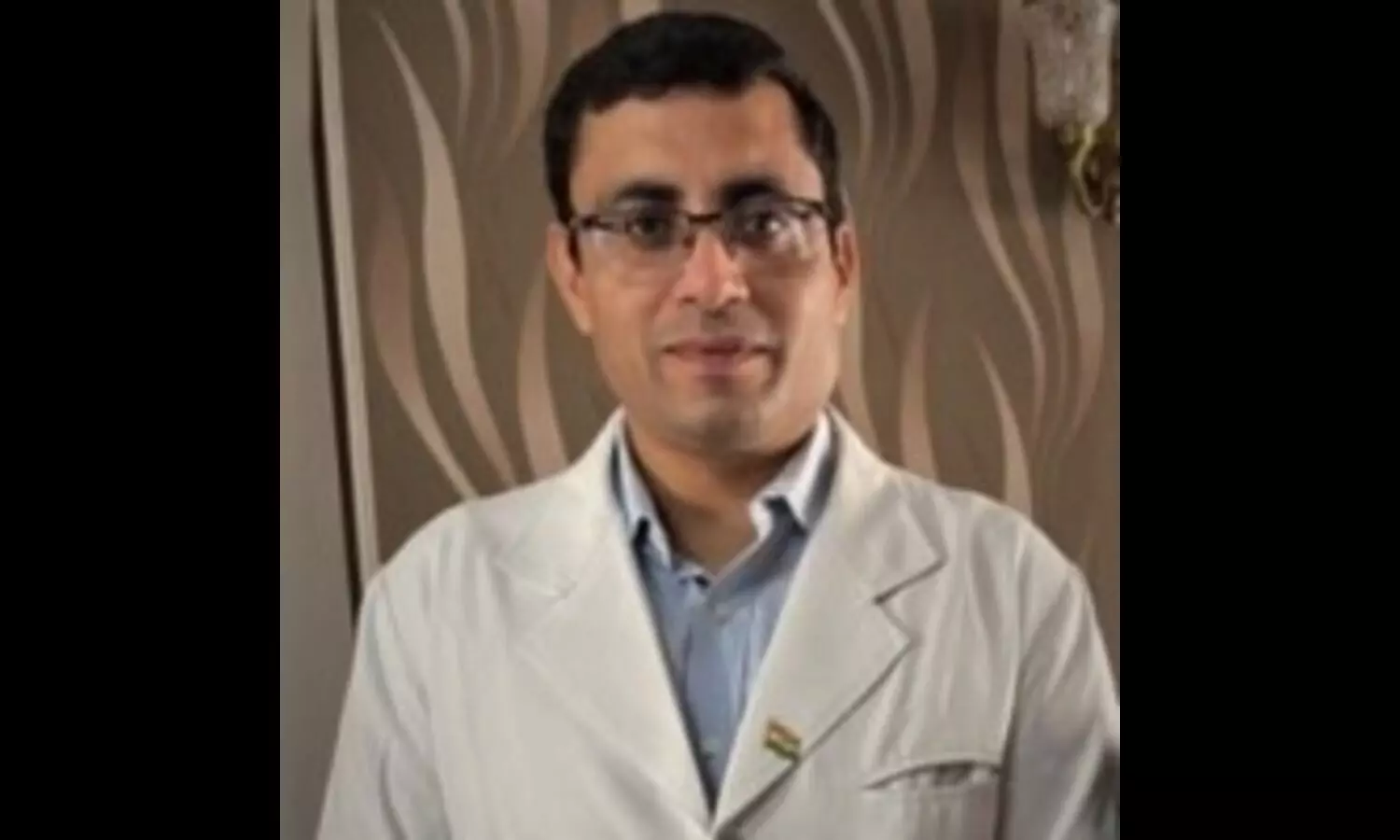
Chandigarh: Dr Ashu Rastogi, Associate Professor in the Department of Endocrinology has been bestowed with the esteemed “Dr Subhash Mukherjee” Oration by the Endocrine Society of India (ESI). Renowned for his significant contributions to the field of endocrinology, Dr Rastogi received the award during the 53rd Annual Meeting of the ESI held in Vizag.
Dr Rastogi’s groundbreaking work in the management of diabetic foot complications has earned him international recognition. A faculty member in the Department of Endocrinology at PGIMER, Chandigarh, Dr Rastogi completed his DM in Endocrinology at PGIMER in 2012.
He was honoured with this prestigious award for his exceptional dedication to advancing the treatment of diabetic foot complications.
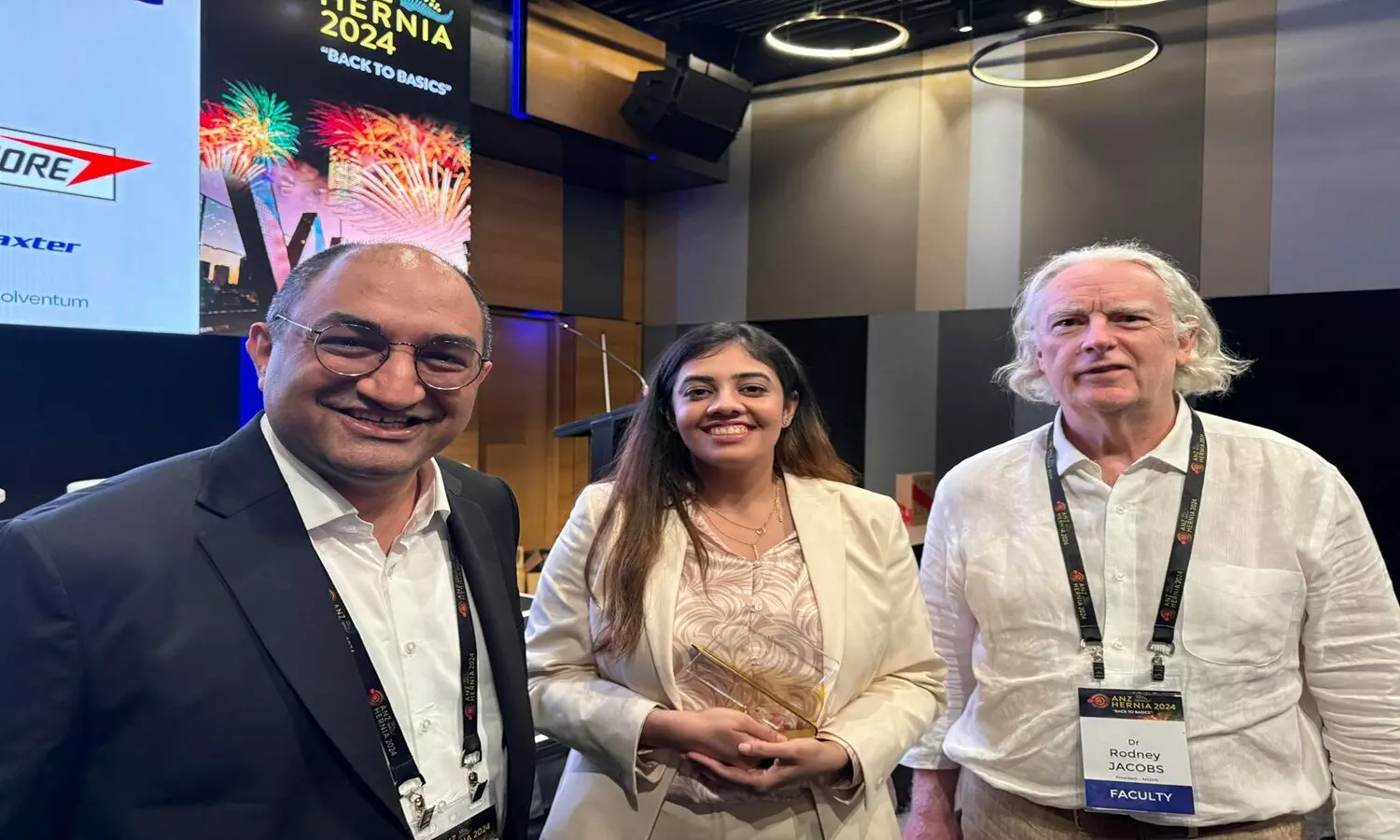 Also Read: Dr Sonalika Sharma wins Prestigious Award for AI Research in Hernia Surgery
Also Read: Dr Sonalika Sharma wins Prestigious Award for AI Research in Hernia Surgery
Currently, he is working on research related to obesity and Charcot neuroarthropathy of the foot, aiming to advance understanding and improve patient care in these areas.
His innovative research on Charcot neuroarthropathy is outstanding. Charcot’s neuroarthropathy is a destructive complication of the joints, often found in people with diabetes who have peripheral neuropathy. His research on this has earned worldwide acclaim and has been instrumental in the formulation of clinical management guidelines used globally.
Also Read: President Murmu confers Florence Nightingale Awards on 15 nurses for outstanding service
Dr Rastogi’s work in this area has had a major impact, helping to prevent amputations and improve the quality of life for countless patients worldwide.
Medical Dialogues had earlier reported that a renowned Endocrinologist, Dr M Ashraf Ganie has been honoured with the “Subhash Mukherjee Memorial” Oration-2023 by the prestigious Endocrine Society of India (ESI). The prestigious Oration has been awarded to Dr Ashraf for his extensive research in the field of endocrine & metabolic disorders.
Powered by WPeMatico
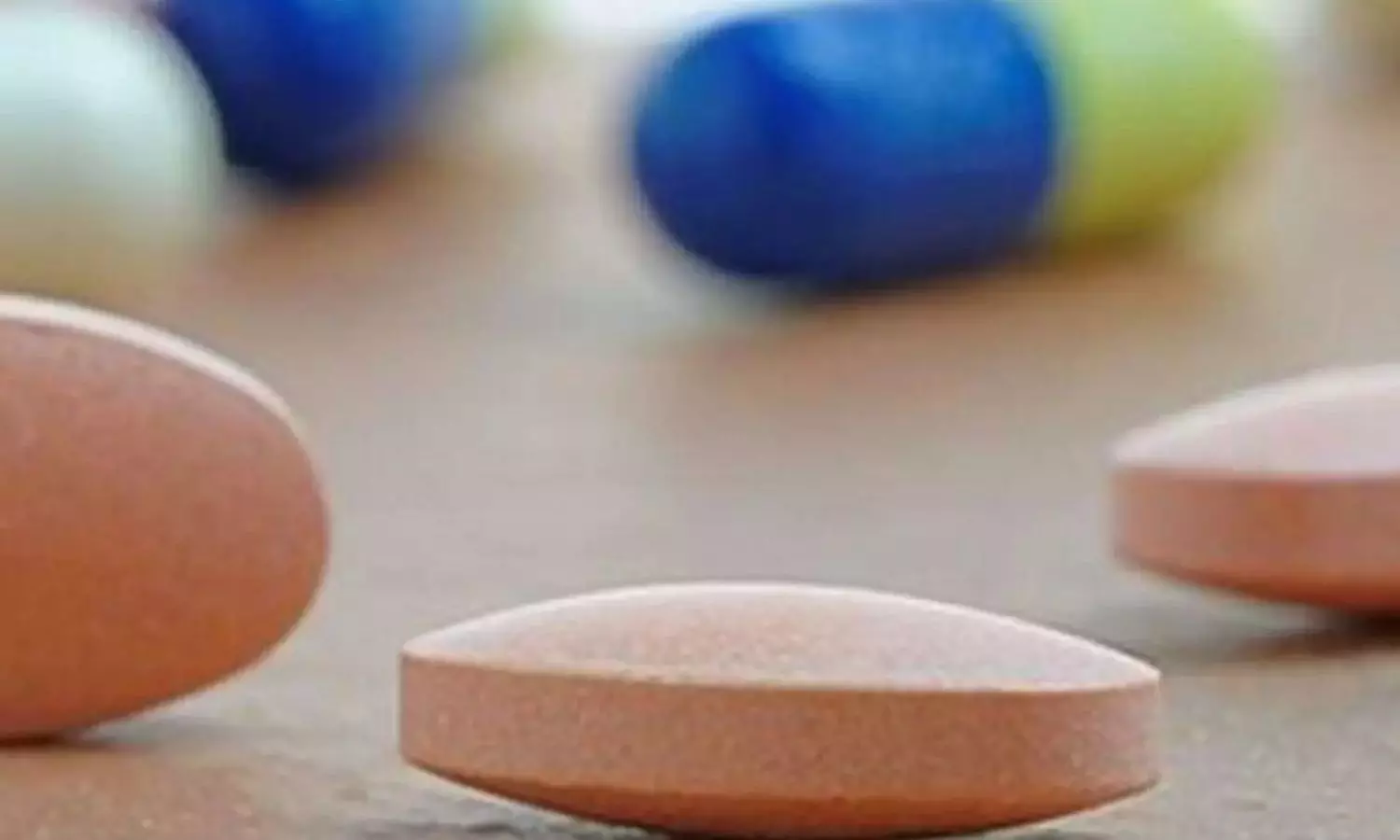
USA: A new study from the AUGUSTUS trial has provided new insights into the most effective antithrombotic strategies for patients with atrial fibrillation (AF) who have recently undergone acute coronary syndrome (ACS) or percutaneous coronary intervention (PCI).
The research, published in the Journal of the American College of Cardiology, highlights that a regimen including a P2Y12 inhibitor and apixaban, without aspirin, significantly reduces the incidence of adverse outcomes compared to traditional treatments involving vitamin K antagonists (VKAs), aspirin, or both.
The ideal antithrombotic regimen for patients with atrial fibrillation following ACS or PCI remains unclear. Renato D. Lopes, Duke Clinical Research Institute, Duke University School of Medicine, Durham, North Carolina, USA, and colleagues aimed to compare four different antithrombotic regimens to determine which combination offers the best outcomes for reducing death, bleeding, and cardiovascular hospitalization. They investigated which antithrombotic regimen best balances safety and efficacy.
The AUGUSTUS trial, a multicenter randomized study with a 2 × 2 factorial design, compared apixaban to vitamin K antagonist (VKA) therapy and aspirin to placebo in patients with AF who had recently undergone acute coronary syndrome or percutaneous coronary intervention and were receiving a P2Y12 inhibitor. The four-way analysis assessed safety and efficacy across the four randomized groups.
The primary outcome measured was a composite of all-cause mortality, major or clinically relevant non-major bleeding, and hospitalization for cardiovascular reasons over a 6-month follow-up period. Secondary outcomes included the individual components of this primary composite endpoint.
The study led to the following findings:
The findings showed that in patients with atrial fibrillation who had recently experienced acute coronary syndrome or undergone PCI, an antithrombotic regimen combining a P2Y12 inhibitor with apixaban, and excluding aspirin, was associated with a lower rate of the composite outcome of death, bleeding, or cardiovascular hospitalization compared to regimens that included vitamin K antagonists, aspirin, or both.
“The findings support the preference for a regimen combining a direct oral anticoagulant with a P2Y12 inhibitor, as it effectively prevents ischemic events while minimizing bleeding risks in this high-risk patient population,” the researchers concluded.
Reference:
Berwanger O, Wojdyla DM, Fanaroff AC, et al. Antithrombotic strategies in atrial fibrillation after ACS and/or PCI. J Am Coll Cardiol. 2024;84:875-885.
Powered by WPeMatico
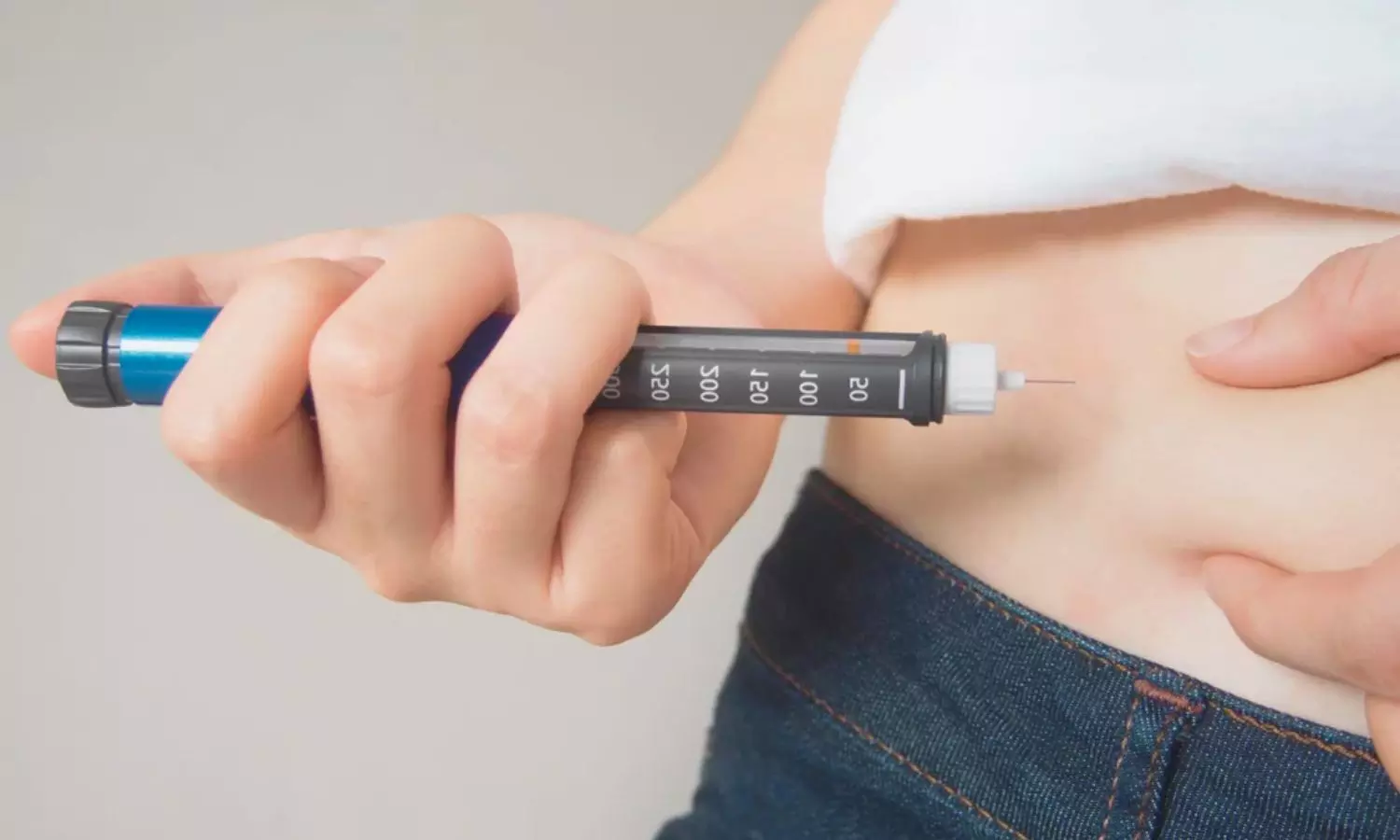
USA: In recent years, medical advancements have provided new hope for the management of obesity and the prevention of type 2 diabetes, with tirzepatide emerging as a groundbreaking option. This novel medication, developed by Eli Lilly, has shown promising results in clinical trials, offering significant benefits for people living with obesity and prediabetes.
A three-year study published in the New England Journal of Medicine revealed striking results for individuals with obesity and prediabetes who were treated with tirzepatide. The researchers found that tirzepatide in this population led to significant and sustained weight loss, as well as a notably reduced risk of progressing to type 2 diabetes compared to those receiving a placebo.
Obesity is a chronic condition and a key risk factor for a range of other health issues, including type 2 diabetes. In a previous analysis of the SURMOUNT-1 trial, tirzepatide produced significant and sustained weight loss in individuals with obesity over a 72-weeks. In the study, Ania M. Jastreboff, Yale School of Medicine, New Haven, CT, and colleagues present three-year safety outcomes for tirzepatide, along with its effectiveness in reducing weight and preventing the progression to type 2 diabetes in individuals with both obesity and prediabetes.
For this purpose, the researchers conducted a phase 3, double-blind, randomized, controlled trial involving 2,539 participants with obesity, including 1,032 who also had prediabetes. Participants were randomly assigned in a 1:1:1:1 ratio to receive once-weekly doses of tirzepatide at 5 mg, 10 mg, or 15 mg, or a placebo. The analysis focused on those with both obesity and prediabetes, who received their assigned treatment for a total of 176 weeks, followed by a 17-week off-treatment period.
The study’s primary objectives were three key secondary endpoints, controlled for type I error: the percent change in body weight from baseline to week 176 and the onset of type 2 diabetes during the 176-week and 193-week periods.
The key findings of the study at 176 weeks are as follows:
“As tirzepatide becomes more widely available, it offers a promising option for those struggling with obesity and prediabetes, providing a new pathway for preventing the onset of type 2 diabetes and improving overall metabolic health. The ongoing success of tirzepatide in clinical settings signals a bright future for treating these interconnected health issues,” the researchers concluded.
Reference:
DOI: 10.1056/NEJMoa2410819
Powered by WPeMatico
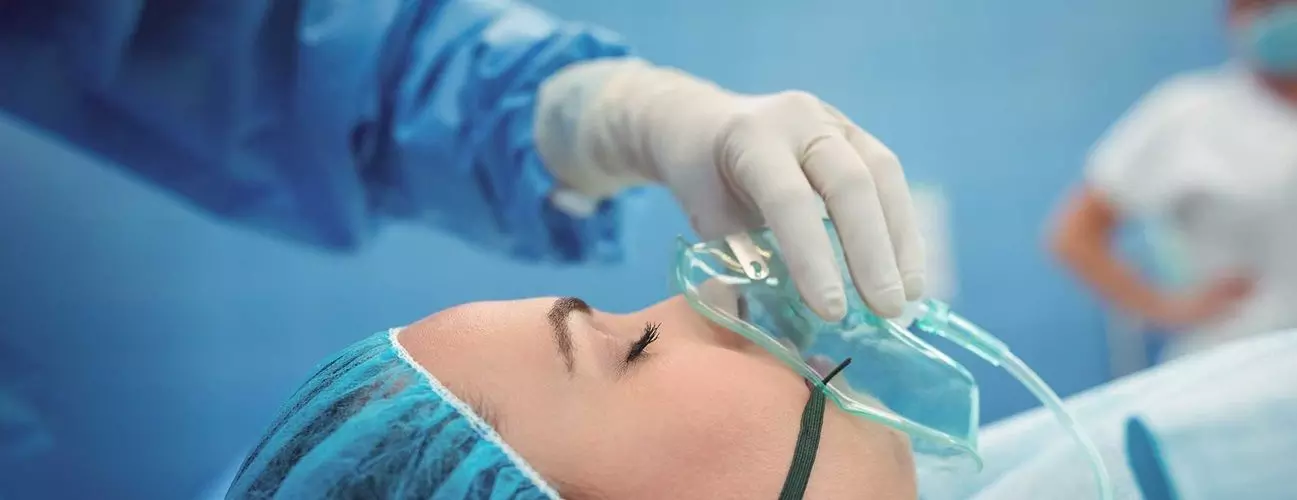
Recent research paper which is a phase III, prospective, multi-centric, observer-blind, randomized controlled trial that compares the efficacy and safety of a generic remifentanil with fentanyl and Ultiva during general anesthesia in the Indian population. The study was conducted at 13 centers in India and included 314 subjects scheduled for elective therapeutic and diagnostic surgical procedures. The primary efficacy endpoint was the haemodynamic response during specific activities such as endotracheal intubation, skin incision, skin closure, and extubation. The results of the study indicated that there were no significant differences in demographic and baseline characteristics across the study groups. Heart rate was found to be similar between the remifentanil and Ultiva groups during the specific activities, whereas the fentanyl group exhibited significantly higher heart rates during these activities. The need for vasopressor and anti-cholinergic drugs was similar across the groups, and no subjects required naloxone administration. The study concluded that generic remifentanil is non-inferior to fentanyl and equivalent to Ultiva for general anesthesia in Indian patients undergoing various surgical and diagnostic procedures. Moreover, it was found that remifentanil offered advantages in terms of optimum haemodynamic stability, fast equilibrating analgesia, and rapid emergence from sedation, making it a suitable alternative to fentanyl.
Research Methodology
The study utilized a robust, observer-blind, multi-center design with rigorous monitoring of haemodynamic parameters. It employed ANOVA, paired t-test, and chi-square/Fisher’s exact test for statistical analysis. The study findings were consistent with earlier research, suggesting that remifentanil effectively attenuates the sympathetic response during intubation and aids in stable haemodynamic control during surgical stress. Despite some limitations, including the limited age range of the subjects and the single geographic focus on India, the study support the non-inferiority of generic remifentanil compared to fentanyl and its equivalence with Ultiva, establishing it as an alternative analgesic component for general anesthesia for various surgical procedures in the Indian population.
Conclusion and Disclosures
In conclusion, the study demonstrated the non-inferiority of generic remifentanil to fentanyl and its equivalence to Ultiva for general anesthesia in the Indian population, making remifentanil a suitable alternative analgesic option during induction and maintenance of general anesthesia in Indian patients. The authors indicated that de-identified data may be requested from the corresponding author and acknowledged the support of Themis Medicare Limited, Mumbai, India, as the study’s sponsor. The authors disclosed their potential conflicts of interest related to the study.
Key Points
– The research paper is a phase III, prospective, multi-centric, observer-blind, randomized controlled trial conducted at 13 centers in India, comparing the efficacy and safety of generic remifentanil with fentanyl and Ultiva during general anesthesia in the Indian population. It included 314 subjects scheduled for elective therapeutic and diagnostic surgical procedures.
– The primary efficacy endpoint was the haemodynamic response during specific activities such as endotracheal intubation, skin incision, skin closure, and extubation. The study found no significant differences in demographic and baseline characteristics across the study groups. Heart rate was similar between the remifentanil and Ultiva groups during specific activities, while the fentanyl group exhibited significantly higher heart rates.
– The need for vasopressor and anti-cholinergic drugs was similar across the groups, and no subjects required naloxone administration. The study concluded that generic remifentanil is non-inferior to fentanyl and equivalent to Ultiva for general anesthesia in Indian patients undergoing various surgical and diagnostic procedures. Remifentanil offered advantages in terms of optimum haemodynamic stability, fast equilibrating analgesia, and rapid emergence from sedation, making it a suitable alternative to fentanyl.
– The study utilized a robust, observer-blind, multi-center design with rigorous monitoring of haemodynamic parameters. It employed ANOVA, paired t-test, and chi-square/Fisher’s exact test for statistical analysis. The findings were consistent with earlier research, supporting the non-inferiority of generic remifentanil compared to fentanyl and its equivalence with Ultiva as an alternative analgesic component for general anesthesia for various surgical procedures in the Indian population.
– In conclusion, the study demonstrated the non-inferiority of generic remifentanil to fentanyl and its equivalence to Ultiva for general anesthesia in the Indian population. The authors indicated that de-identified data may be requested from the corresponding author and acknowledged the support of Themis Medicare Limited, Mumbai, India, as the study’s sponsor. The authors disclosed their potential conflicts of interest related to the study.
Reference –
Hemantkumar I, Swain AK, Mishra M, Singh S, Gurudatt CL, Giridhar JB. Efficacy and safety of a generic remifentanil formulation versus fentanyl and Ultiva during general anaesthesia: A phase III, prospective, multi‑centric, observer‑blind, randomised controlled trial. Indian J Anaesth 2024;68:985‑95
Powered by WPeMatico
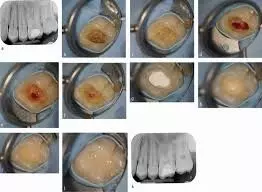
Total-etch system outperfors self-etch system for pulp vitality preservation after indirect pulp capping treatments suggests a study published in the Journal of Clinical Medicine.
Reference:
Alovisi, M.; Baldi, A.; Comba, A.; Gamerro, R.; Paolone, G.; Mandurino, M.; Dioguardi, M.; Roggia, A.; Scotti, N. Long-Term Evaluation of Pulp Vitality Preservation in Direct and Indirect Pulp Capping: A Retrospective Clinical Study. J. Clin. Med. 2024, 13, 3962. https://doi.org/10.3390/jcm13133962
Keywords:
Total-etch, system, outperfors, self-etch, system, pulp vitality, preservation, indirect, pulp, capping, treatments, study, Alovisi, M.; Baldi, A.; Comba, A.; Gamerro, R.; Paolone, G.; Mandurino, M.; Dioguardi, M.; Roggia, A.; Scotti, N, direct pulp capping; indirect pulp capping; self-etch adhesive; mineral trioxide aggregate; resin-based glass ionomer; pulp vitality,Journal of Clincial Medicine
Powered by WPeMatico
